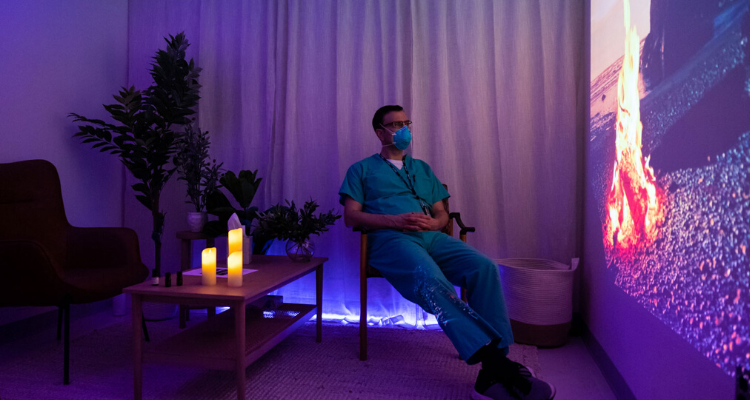What to Expect From A Full-Stack Web Development Course?

The online Full Stack Web Development course will teach one to use both front-end and back-end technologies to design interactive and responsive web apps. The Full-Stack Developer course starts with the fundamentals of web development, then moves on to JavaScript and jQuery basics, Angular or React user interfaces, scalable back-end applications with Express and Node.js, and data management with MongoDB.
A full-stack web development course refers to the entire depth of a computer system program, and full-stack developers work in both the front end and back end of web development. Everything a client, or site viewer, may see and interact with is on the front end.
Developers who construct whole programs and websites are known as full-stack developers. These programmers work on all aspects of development, including front-end, back-end, database, debugging, and testing. In other words, the developer must fully comprehend the software. Because of their knowledge of many technologies, front-end developers are in higher demand. They can handle all areas of development, resulting in a more seamless output.
However, resources for becoming a Full Stack Developer are limited, with only sections or random technologies available for you to master and build on your own. As a result, we created this course to enable developers to migrate from simple developers to Full Stack Developers by bringing all technologies together in complete sync.
What Do You Learn In A Full-Stack Web Development Course?
The full-stack web development course is divided into five sections: front-end, back-end, Database, Other Essential Technologies, Debugging/Version Control, and Other essential Technologies. Each area covers a variety of technologies to assist you in obtaining additional developer experience.
Beginning with front-end development, the learner will gradually proceed to other parts of development, such as back-end, database, debugging, version control, and other important technologies for a developer.
In addition to theory-based learning, the course will focus on practical applications by thoroughly covering different projects, allowing you to learn via practice.
Let’s have a broad look at the various technologies and frameworks you’ll learn:
- Front-end (The browser and user interfaces/interactions are referred to as the front-end): HTML, HMTL5, CSS3, Twitter Bootstrap, JavaScript, and jQuery.
- Back-end (Back-end technologies are concerned with the application’s server-side): Node.js, Meteor.js, Angular 2, PHP, Ruby on Rails.
- MySQL, PostgreSQL, MongoDB, CouchDB, and Apache Cassandra are examples of databases.
- Memcached, Redis, Apache Lucene, and Apache Solr are among the other essential technologies.
- GIT, Subversion, Task Runners (Grunt, Gulp), Debuggers – Debugging/Version Control (Xdebug, Firebug)
Why is it Important to Learn Full Stack Web Development?
Full-stack web development is a software profession/stream in which a developer works on both the client-side and server-side of a tech product. A Full Stack Developer is skilled in a variety of technologies that aid in the development of a solid tech product and so plays an important part in business decisions. It’s one of the most demanded positions in the software industry.
Markup is used in HTML to describe the overall structure of web pages. For a highly efficient presentation of HTML elements, they must also be CSS experts.
A full-stack developer, on the other hand, is someone who can work on both sorts of websites (interactive and static). They possess a diverse set of talents that enable them to create, manage, and upgrade server-side operating systems, databases, libraries, and frameworks, as well as comprehend the UX design requirements of a web or mobile application.
Starting with the very fundamentals and moving on to the more advanced features of Full Stack Web Development, this university Post Graduate Program will help you grasp both front-end and back-end Java technologies. You’ll learn Angular, Spring Boot, Hibernate, JSPs, and MVC in this web development course to help you get started as a full-stack developer.
What is the Job of a Full-Stack web Developer?
Full-stack developers create both the front-end and back-end of a program, as well as deploy, debug, and maintain databases and servers. You’ll have an advantage as a Full Stack Web Developer since you’ll be able to make better technical judgments and see the larger picture.
What Skills are Required to Become a Full Stack web Developer?
As a Full Stack Developer, you’ll be a jack of all trades, which means you’ll need to know HTML, CSS, UI & UX, JavaScript, and more. Java, Python, Node.js, and Golang are examples of server-side languages. Express, Spring Boot, Django, and other frameworks. Along with a working knowledge of System Design, Data Structures and Algorithms, Databases, and version control systems such as Git.
Why full Stack Web Development? What are its Job Opportunities?
Full-stack web development focuses on having knowledge of both the front end and back end of a website. Full-stack web developers can work on the entire stack of components required to build a website or application using programming.
The tech job market is lucrative, dynamic, and ever-changing. The roles available in software development are likewise rather varied.
- Front-end Developer
- App Developer
- Android Programmer
- Mobile Developer
- Web Programmer
- Back-end Developer
- Full Stack Developer
- Programmer
- Web Developer
- Software Engineer
- Full Stack Engineer
- UI Engineer
- Back-end Engineer and many more.
Caltech CTME-sponsored Post Graduate Program in Full Stack Web Development
This Caltech CTME-sponsored Post Graduate Program in Full Stack Web Development will help you advance your career as a software engineer. You’ll master modern coding techniques with Bootcamp-level intensity in just a few months and obtain all you need to be a full-stack technologist.
Starting with the very basics and further moving on to the advanced features of Full Stack Web Development, this Post Graduate Program (PGP) will help you gain a firm grasp over both front-end and back-end Java technologies. You’ll learn Angular, Spring Boot, Hibernate, JSPs, and MVC in this web development course to help you get started as a full-stack developer.











